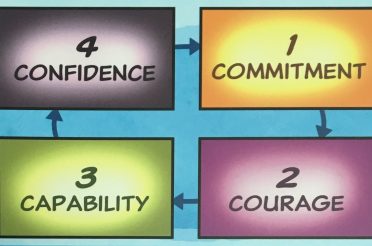 The most important segment of The Business Infinity Loop™ is the intersection – the space where the entrepreneur sits, learns, and adapts. Here hypotheses are suggested, disproved, or confirmed as part of the business’ natural evolution.
The most important segment of The Business Infinity Loop™ is the intersection – the space where the entrepreneur sits, learns, and adapts. Here hypotheses are suggested, disproved, or confirmed as part of the business’ natural evolution.
But what’s the best way to actually go about understanding what your numbers are telling you? How can you glean what your Income Statement is trying to reveal? And what actions should be fueled after you step away from the analysis?
Asking the Right Questions
Profit is calculated on the Income Statement, but truly understanding profit comes from far more than looking at one number. To unpack the meaning of your Income Statement, approach it by asking these important questions:
- What’s your profit cycle? Businesses run on different timelines: Sometimes summer is boom time, sometimes Christmas; Sometimes product-to-market takes two years, sometimes an innovation cycle is six months. Clarify your business’ rhythms, and compare apples-to-apples in order to get insights. One way to accomplish this is to use a “comparative rolling 12 months” Income Statement – this means no matter which month it is (e.g., June), you’re always looking at twelve months (e.g., July prior year to June current year) and comparing it to the previous twelve months. By doing so, you’re taking in a full “profit cycle” to see the big picture movements, rather than getting distracted by the normal up/downs between months.
- Is there actually a profit? This may seem obvious, but a lot of business owners unknowingly muddy their view of profit because of how they track their numbers. First off, are there costs you’re incurring personally which aren’t making their way into the books? (e.g., mileage you’re not reimbursing yourself, digital services that are linked to your personal credit card, etc.) Second, is your compensation fully reflected? (e.g., If you’re a Schedule C business, have you created an “Owner Compensation” expense line? And if you’re an S-corp/Partnership, is your “reasonable wage” / ”guaranteed payment” truly representative of compensation for your labor?) Take time to consider and plug these and other “leaks” in your profit calculation to ensure that what you’re looking at is a true reflection of how things are going, not an alternate reality.
- How sustainable are your profits? Were there one-time events that can’t be relied on to repeat — after backing these out, where does your profit really stand? How about your profit spread across customers: are they concentrated among a few, the loss of one which would throw you into the red? Lastly, when you look at your main profit drivers, are they positioned to perform well into the foreseeable future, or are you seeing profit pressures?
- What is your fixed cost structure? If you were to have no sales, what amount would you be spending each month? These fixed costs form your “breakeven point” – the point past which you actually start making money. Are you consistently above breakeven each month, or are some month’s excess covering other month’s shortfalls? Now take a look at your fixed costs as a percentage of revenue: is that percentage increasing over time, squeezing your profits?
- How are profits being directed? If you have debt, what percent of profit is going to pay lenders and is it inhibiting your flexibility? How about taxes: are you using this year’s profits to pay this year’s tax, or are you funding last year’s taxes with this year’s money? Are profits enabling you to invest in the changes that will keep your business flourishing into the future, or do you never seem to have the funds and are just riding your current business model? What about your personal goals: whether it’s funding education costs, saving for retirement, or taking a vacation, are you seeing the needle move?
These questions are far from an exhaustive list, but if you run through them next time you look at your Income Statement, you’ll step away with a pretty good sense of how strong your business’ profit-generating ability is.
Applying What you Learn
The critical next step is to identify what actions to take in response to what you saw — all your observations won’t help, if you don’t boil down the learnings and adjust. Grab a sheet a paper and think through possible actions, using the below as a helpful start:
- Is it time to change your accounting design so it includes everything and gives you an easy view of profit?
- What reports or indicators might you automate so you can keep tabs more easily and react more quickly?
- Is it time to innovate new products/services to expand your offering, or replace ones that are naturally fading?
- Should you eliminate some fixed costs that have stuck around through inertia, or at least not enough to justify their price?
- What about setting aside part of profits into an “innovation account” that you can use to try new things and rollout new products/services?
Honing the Skill of Evaluating Profit
The skill of knowing and regularly evaluating your profit model is critical for all entrepreneurs – after all, profit is the lifeblood of your company without which it will eventually wither and die. With good exercise over time it will improve just like any other skill, and enable you to direct your business from one success to the next.
To enlist our Financial Design Team to help create, evaluate, and evolve your profit model, connect with us online or by phone.






